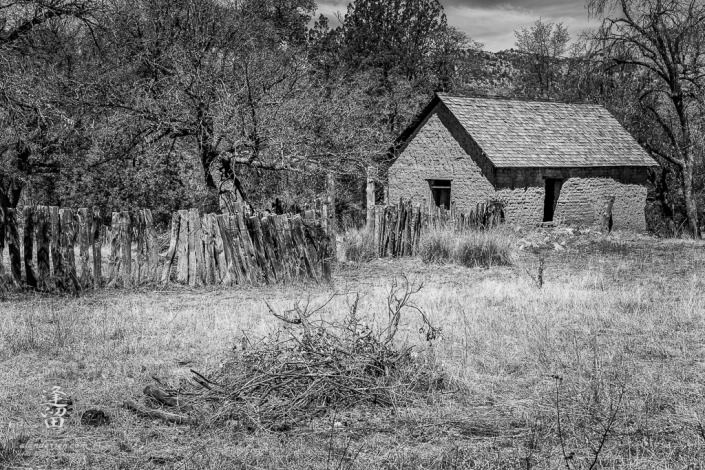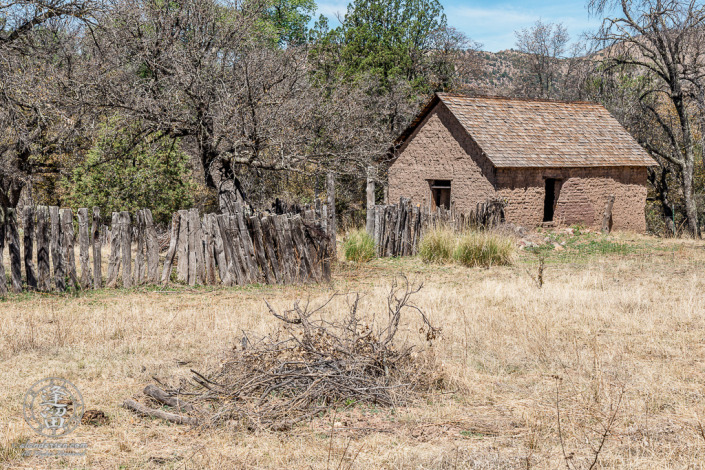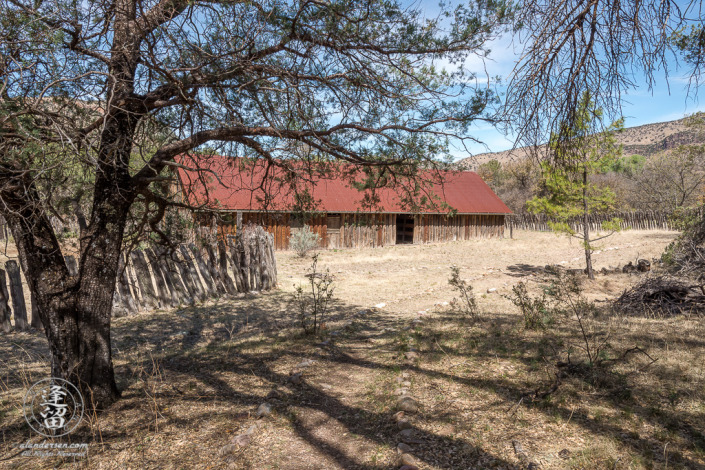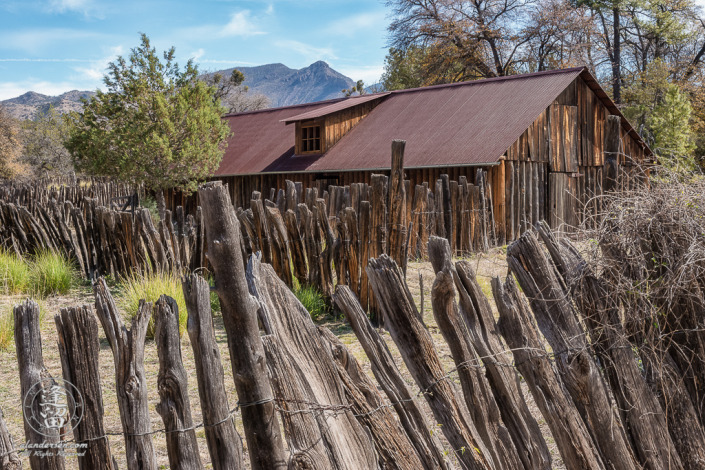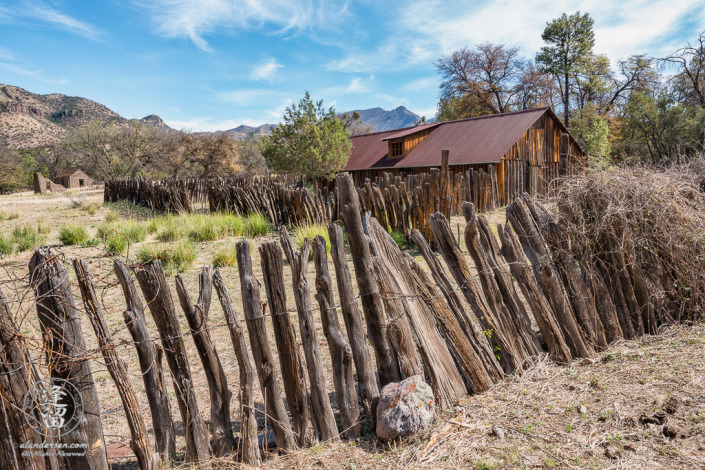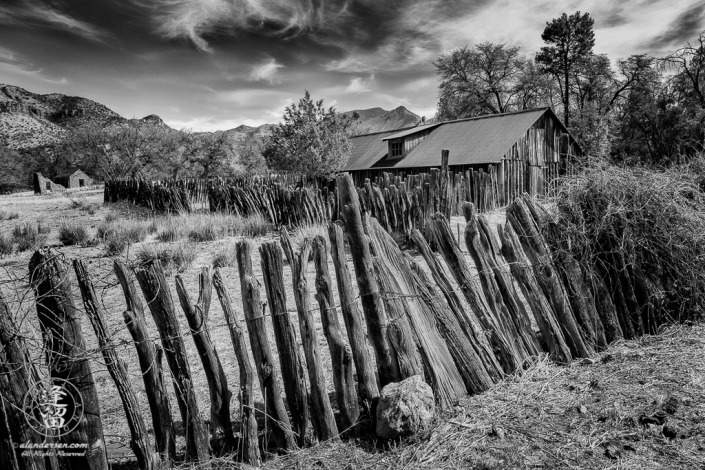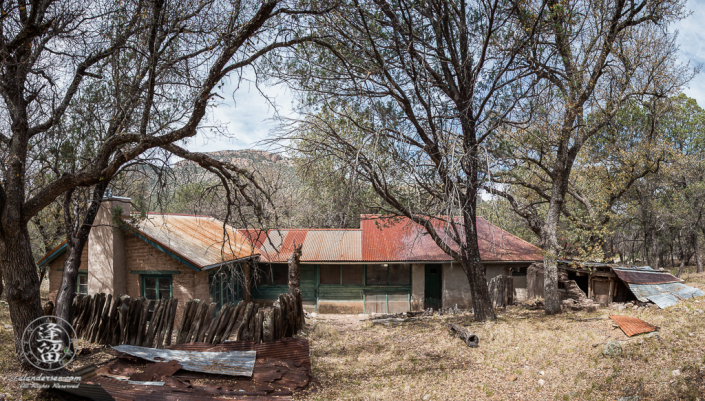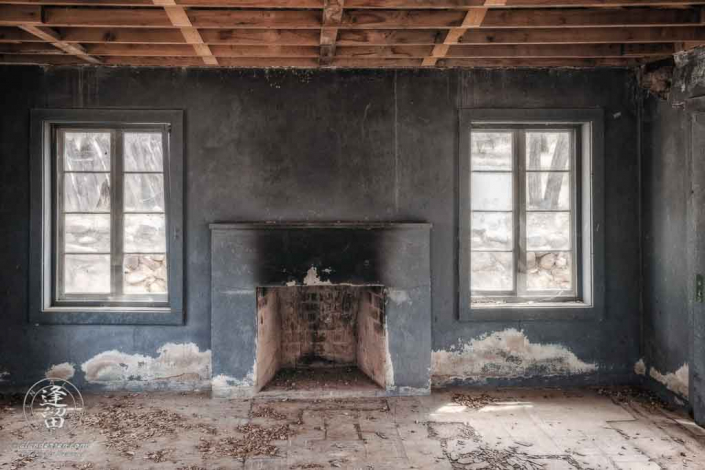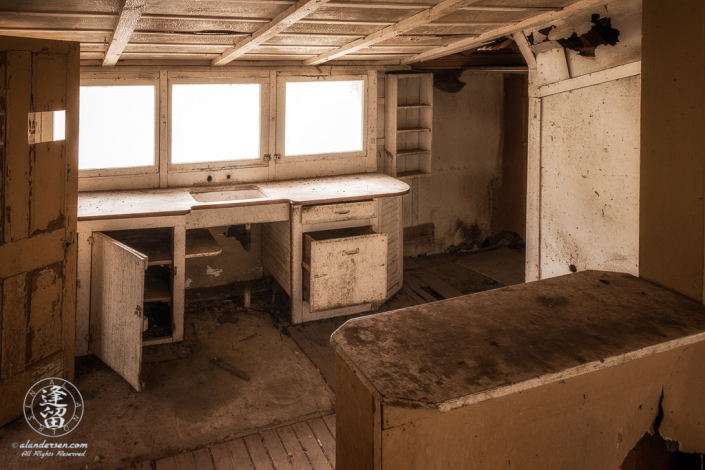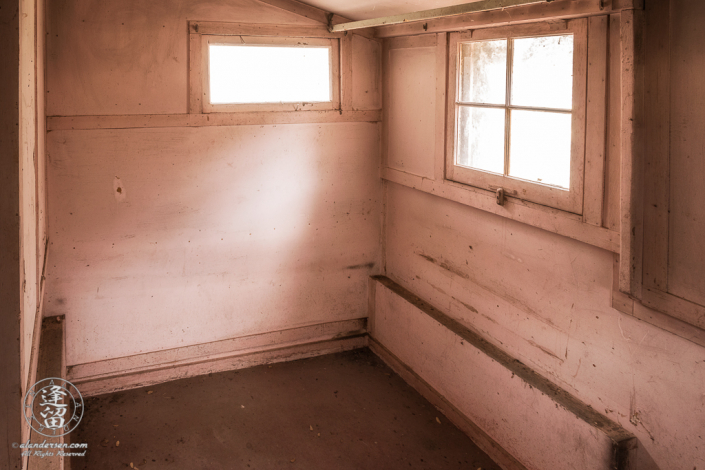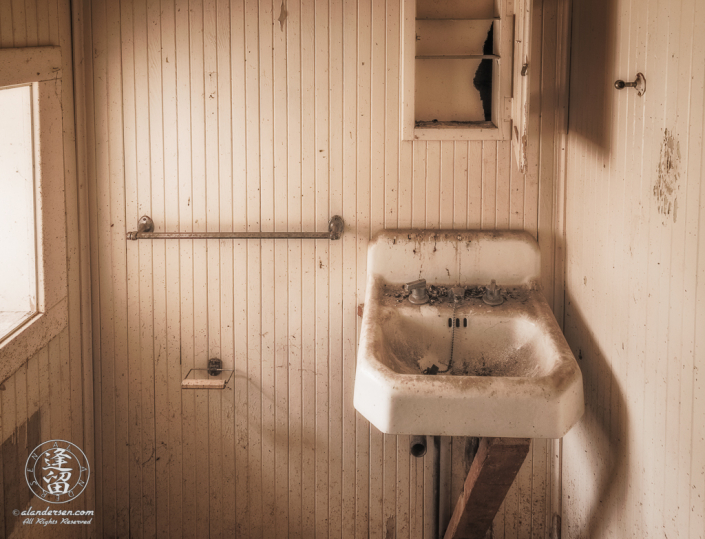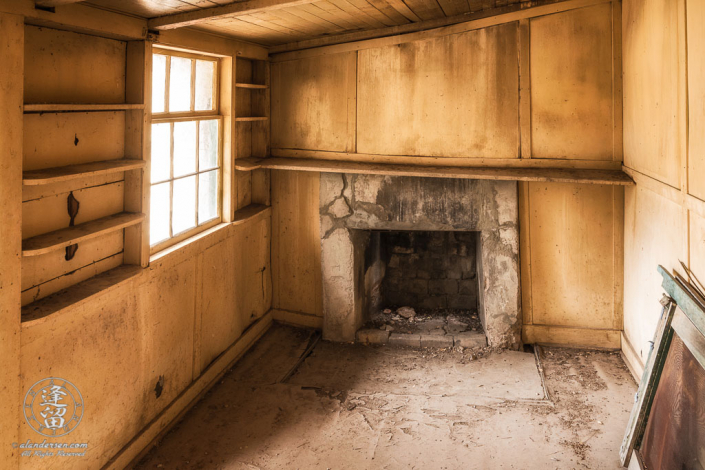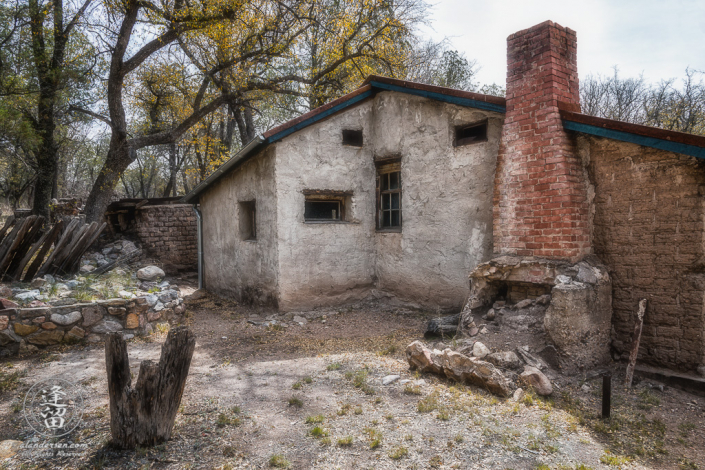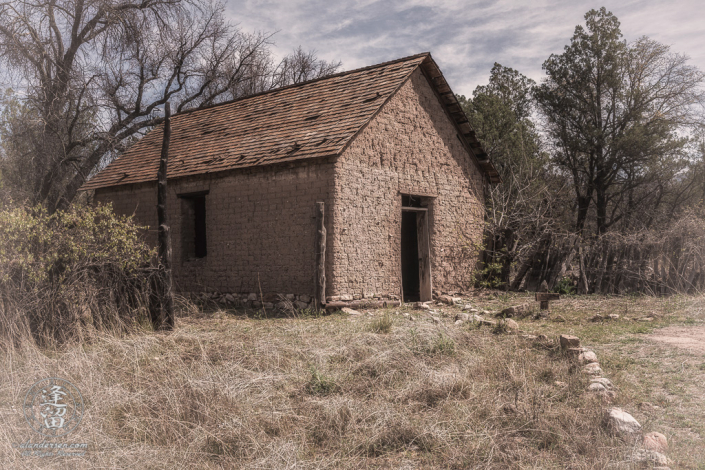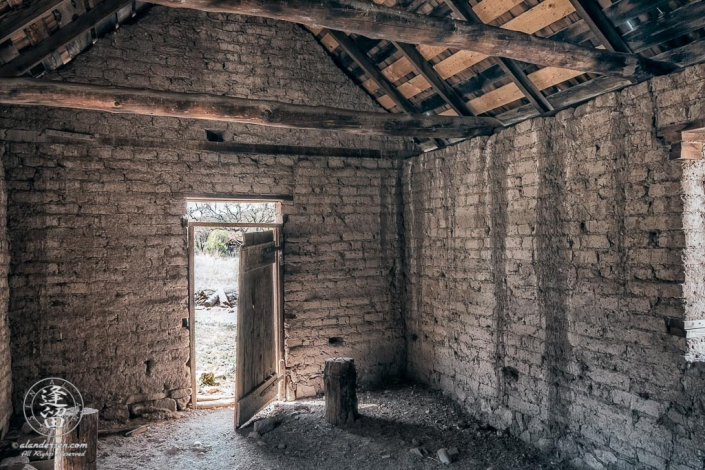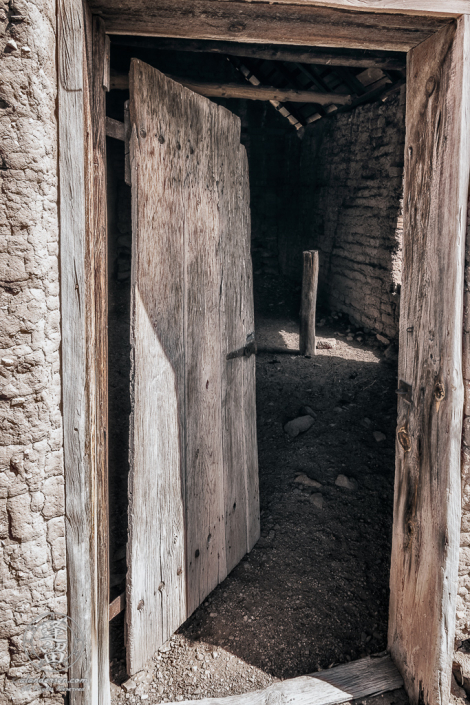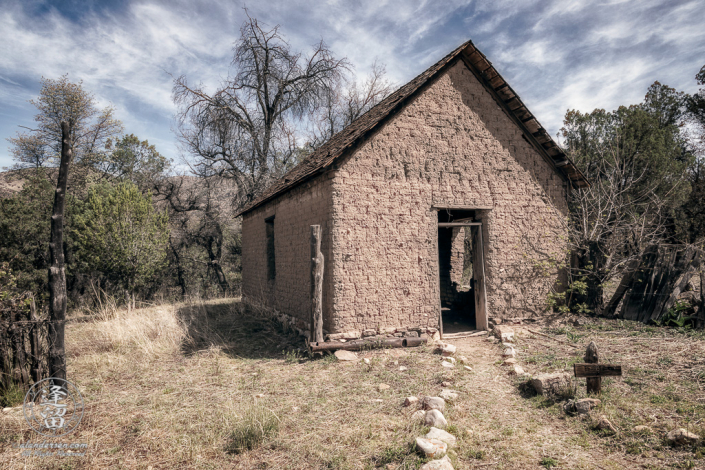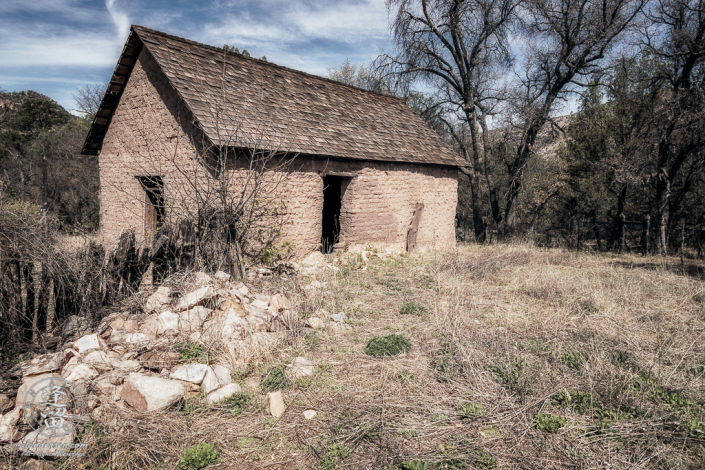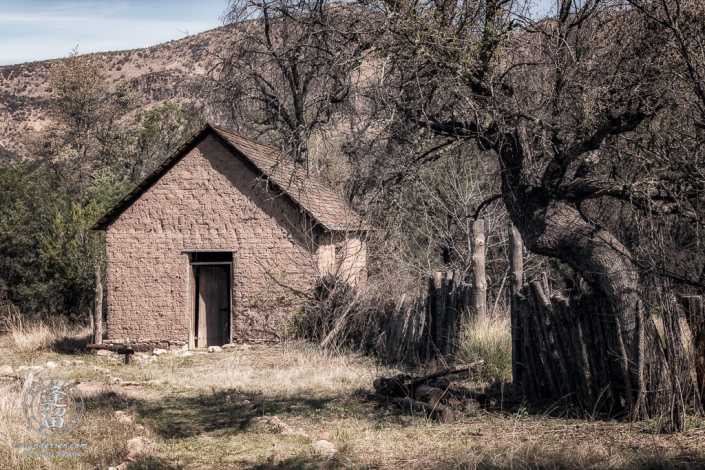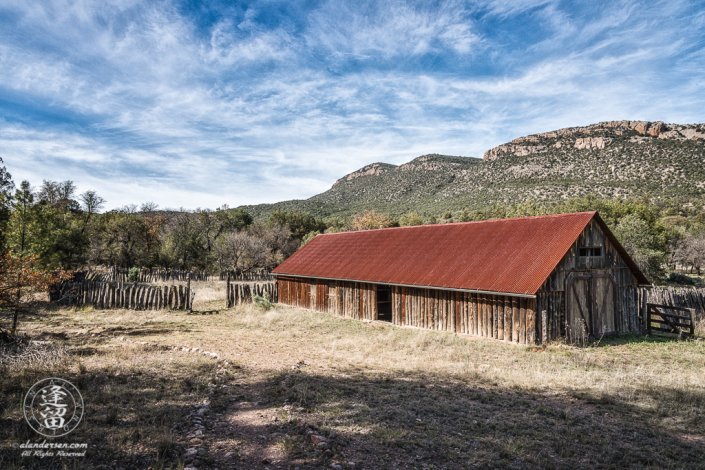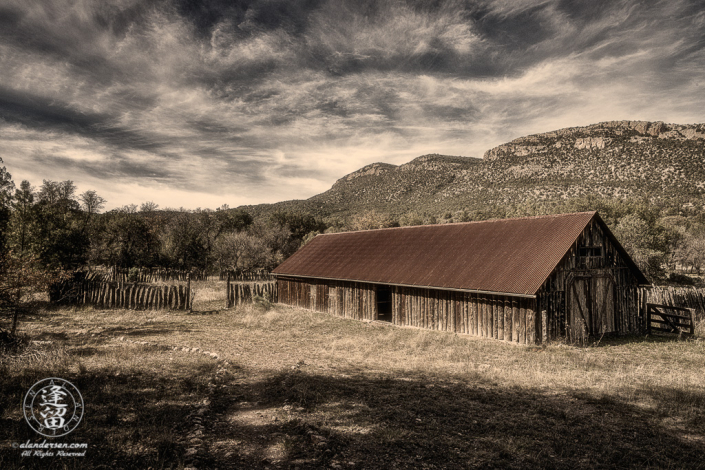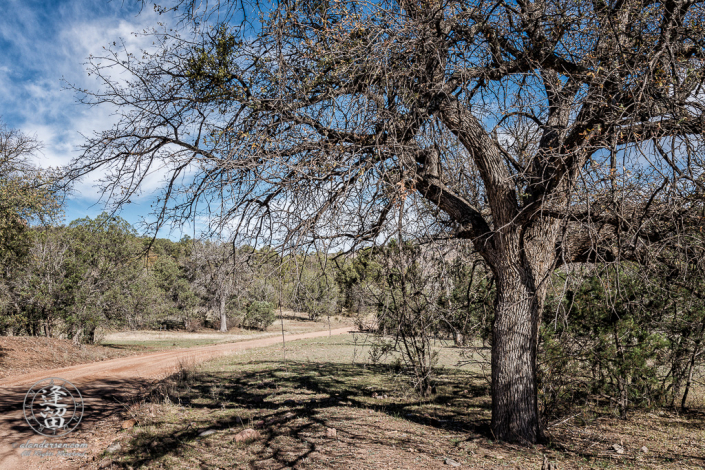Camp Supply, as Camp Rucker was originally named, was established on 29 Apr 1878 as a staging point near the old San Bernardino Ranch in Arizona’s Cochise County, to support Army troops in pursuit of renegade Chiricahua Apache Indians along the Mexican Border. Due to protests from the Governor of Sonora, Mexico, who was uneasy about the proximity of an armed encampment so close to his border, the station was moved six miles up the White River to its present location.
On 11 July 1878, Lieutenant John A. “Tony” Rucker, Lieutenant Austin Henely, Apache Indian scout John Rope, and several supply contractors for the military were returning to Camp Supply, their horses laden with goods, when they got caught in a heavy monsoonal thunderstorm. They decided to wait the storm out in a nearby saloon and continued their trip when the weather cleared. Due to the heavy downpour, the normally passable river was now a raging torrent. Not wanting to to have to camp overnight next to the river when Camp Supply was so near, they decided to forge the turbulent waters.
There are two different accounts of what happened next. The official plaque at Camp Rucker states that several forays were made to cross the river and on one foray Lt. Henely’s horse slipped and he fell into the river. Lt. Rucker quickly followed into the river in a vain attempt to save his friends life and he too got swept away.
The other account states that the Indian scouts and civilian contractors were familiar with river crossings and each man swam across the the rushing waters next to his horse to arrive safely on the opposite bank. The young officers however made the fatal mistake of plunging into the river together and then rode their horses side-by-side. One of the horses slipped, knocked against the other horse, and both men were thrown into the swift waters.
Regardless of which version is correct, Lt. Rucker tried to save Lt. Henely and lost his life for it. John Rope and the civilian supply contractors spent three hours in the dark, up to their chests in cold fast moving water, looking for the bodies of the two young Army officers which they eventually found a mile and a half down stream.
To commemorate his selfless act of heroism, an order was issued on 1 October 1878 to change the name of the installation to Camp J. A. Rucker. The name change became official some time in December of 1878, according to the time-line plaque on the parade ground at Camp Rucker.
This sequence of events seems to be at odds with accounts cited by several other sources which state that Camp Supply was changed to Camp J. A. Rucker on 29 April 1879. The name Camp Supply was then assigned to a station on the other side of the mountain range, and that station was later renamed to Camp Price.
Camp Rucker was abandoned on 4 Nov 1880 and its assets moved to Fort Apache, but it was still used periodically for various military operations against the Chiricahua Apache Indians until the surrender of Geronimo in 1886.
From here on, the property became a civilian asset, commonly referred to as the Old Camp Rucker Ranch, and it passed through several hands over the course of 80 years until its final owner transferred the deed to the U.S. Forest Service in 1970, a sequence of ownership which I’ve outlined elsewhere on this site so I won’t rehash it here.
I will, however, add an interesting aside which everyone seems to reference, and that is a historical connection between Camp Rucker and the famous gunfight at the OK Corral in Tombstone Arizona.
Camp Rucker reported to the authorities that six mules were stolen from its stables on 21 July 1880. A search was conducted for the missing animals by Lt. J.H. Hurst and U.S. Deputy Marshal Virgil Earp. The mules were found on Frank and Tom McLaury’s ranch along the Babocomari River, and their brands had been changed. This, and several other incidents with the McLaury’s led up to that fatal gunfight a year later at the OK Corral.

